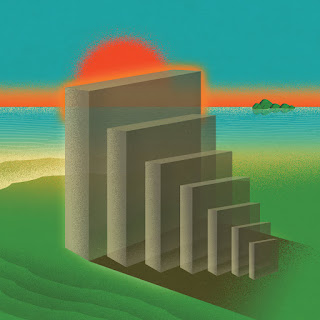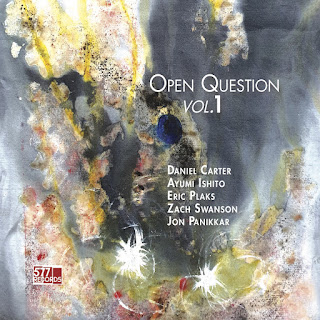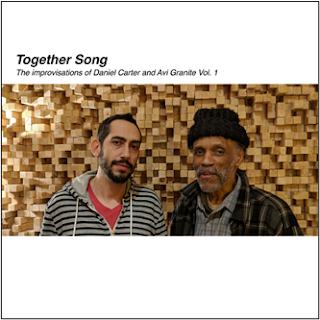By Sammy Stein
Bassist Tyler Mitchell has worked with stellar jazz musicians who have
rightfully earned the title ‘legend’. They include John Hendricks, Shirley
Horn and Mitchell’s long association with the Sun Ra Arkestra. He plays as
leader and sidesman in the avante garde and traditional fields. From early
in his career he has been surrounded by people who knew the greats of
experimental jazz music like his bass teacher, Donald Raphael Garrett who
worked with Coltrane, Shepp and Kirk and Malachi Favors who worked with the
Art ensemble of Chicago. With the Sun Ra Arkestra, Mitchell recorded two
albums and toured before joining Art Taylor’s Wailers and then Jon
Hendrick’s for his 1990 European tour. He recorded the Grammy nominated
album ‘Freddie Freeloader’ with Hendricks, Wynton Marsalis, George Benson,
Stanley Turrentine, Al Grey and Al Jarreau among others. Since the late
1990s Mitchell has played with Rashied Ali, Frank Lowe and others, and
continues to play with the Sun Ra Arkestra and with his own group.
Mitchell now releases Dancing Shadow on Mahakala music. The recording
features the playing of the Sun Ra Arkestra leader Marshall Allen. Mitchell
and Allen have known each other since the mid- 1980s and resumed their
partnership over the past decade when Mitchell rejoined the Arkestra after
taking a sabbatical during which he gained in musical knowledge and
explored different paths. He travelled extensively in Europe, Mexico, Cuba
and Central America. Allen and Mitchell have a lot in common besides the
influence of their former leader, Sun Ra. Both players find common ground
and cross-pollinate experiences in both free and compositional jazz music.
Both are still exploring, learning and this album is the product of a
collaboration which goes deeper than simply playing in the same outfit.
Marshall is 97 years old but has lost nothing in his playing, nor his
passion for the music, which is demonstrated by the superlative expression
which he brings to the arrangements. If anything, listening to recordings
where Allen plays in the 1970s and comparing them to now, Allen is even
more adventurous perhaps and it is a joy to hear him on this album.
This project has been a vision for Mitchell for several years and for the
recording, he brings to the album musicians Chris Hemmingway (tenor sax),
Nicoletta Manzini (alto sax), Wayne Smith (drums) and Elson Nascimento
(percussion), and the sextet deliver both horn arrangements and free
passages with aplomb.
When Mitchell returned to the Arkestra in 2010 he felt he had to do a
project with Allen and says, “ I said, ‘You've got to do a project with me
one day!' I was just waiting for this moment to come. Oh man, it's
beautiful, man! Everything just came so natural with Marshall. He's a
master, man. He's from before be bop; he's from the swing era, you know?”
Allen is indeed steeped in swing as well as free jazz, he left his native
Louisville, Kentucky during World War II. He played clarinet and alto
saxophone with the U.S. Army's 17th Division Special Service Band, spent
the late '40s working with James Moody, then studied at the Paris
Conservatory of Music. By 1951, he had returned to the U.S. and, in 1958,
joined Sun Ra's Arkestra, with whom he's been associated ever since. With
James Spaulding initially being Ra's main alto player, Allen was encouraged
to cultivate other talents over the years, including flute, oboe, piccolo,
and EVI (a brass- and wind-based controller for synthesizer). Moreover, the
Arkestra was the perfect ensemble for Allen to perfect his expressive,
non-chordal approach, full of howls and birdsongs. His lifetime of music
has given Marshall a full-house of expertise in all idioms within the
genre.
Nowadays, when Allen leads the Arkestra, Mitchell says he, “covers all the
different styles in jazz when we do a concert. It's not just swing, it's
not just free. It covers a little bit of everything. We mix it all up, with
some free stuff and old Fletcher Henderson stuff, to rhythmic songs with
different kinds of layers. That's why this record has got a little bit of
everything.”
The compositions of Sun Ra are the perfect vehicle for this eclecticism,
especially those from the earliest years of the Arkestra, and the album
includes Interstellar Low Ways, Angels & Demons at Play, Dancing
Shadows, Carefree, Enlightenment and A Call for All Demons. However,
don’t expect slavish reproduction on this album, with these musicians. As
Mitchell points out, “Marshall was on all those records back in the day.
But he chose not to sit and play the same arrangements. He preferred to put
something fresh on top. A new line. He didn't want to just do his line
again, like back in the '50s. He wanted to create on the spot.”
The set is rounded out with a Thelonious Monk tune, “Skippy,” two by the
alto player Manzini and three by Mitchell himself. His contributions spring
directly from his impressions of his fellow players. “Nico” and “Nico
Revisited” refer to Manzini's nickname. Mitchell says, “We did a couple of
takes on the song, and they were so similar, yet so different. That's why I
called the other one 'revisited'.” His third was inspired by Allen, but
actually begins with Mitchell’s bass solo. “I had him directing me,” says
Mitchell. “He directed me so I could go off into it. 'Marshall the Deputy'
is the title — that's what Sun Ra used to call him. It was a play on words:
You've got the Marshall and you've got the deputy.”
The ensemble on the recording have a certain freedom in their playing, yet
they also comply with the arrangements on some of the numbers where
notation is clearly heard. Mitchell explains, “ I thought the voicings from
the horns would do all the chords I needed. “Sometimes a piano can really
lock a person in, you know? It locks you up where you can't get out and be
free. But when the piano and guitar are gone, I can play a lot of different
notes. A lot of different things that ordinarily would clash with the
piano.”
Mitchell was keen to try some of Sun Ra’s tunes with a smaller band than
the Arkestra. “The tenor player, Chris Hemmingway, joined the band just
recently, and he turned out to be really good. Nicoletta is one of
Marshall's proteges. She put a lot of arrangements together, and put in a
lot of stuff to make it really happening. The horns kept things from really
sounding too out there. The way they blew around the music really kept a
cohesiveness around each song, where it wasn't just a soloist blowing. The
shape of the song was always there. And then the drummer and the
percussionist both play with the Sun Ra band, so they knew the music I
wanted to do. It really paid to have somebody who knew the songs. I just
did them a little different,” says Mitchell
And then there was Allen. Mitchell says, “Marshall will improvise on the
spot. And if a song's too nice and neat and clean and all too perfect,
he'll come and just mess it all up. You don't want it to be all too
perfect. He likes to have the chaos. Because he believes there are no wrong
notes, you know? His philosophy is, you play one note, you make a mistake,
and then say something right. Then make another mistake. Say something
wrong. He hears the song like that. 'Play something wrong! Now play
something right! Now play something wrong!' I just let Marshall do his
thing. Everybody else had special things they had to play, arrangements to
follow, but Marshall, I just let him do what he does. I really had no
instructions for him except to direct us. We do a lot of free stuff, and
use a lot of space chords and all that. I need him to direct us. Other than
that, I just want him to fill in all the right places, and put his
signature on it.”
And on the album Allen does precisely that. He fills the spaces, where
needed, he adds delicacy where it is right and he blasts freely where it is
fitting to do so. The final product is the perfect synthesis of freedom and
constraint, hard bop and sonic texture. The listener is never lulled into
complacency. And this goes for Mitchell himself: “Each song's got a
different vibe,” he says, “and I still listen to the music. I usually don't
like to listen to what I've done. I don't like to keep hearing myself. But
this particular record really holds my attention.”
‘A Call for All Demons’ is a beautiful thing – a combination of steadfast
rhythms, Mitchell told me, “this is one of my favorites. I was inspired by
the constant repetition played by the horns section, while Marshall solos”.
The solos from Allen are indeed awesome, soaring out across the top.
‘Angels and Demons’ is definitely out there; a lot of atmosphere, spacey,
warping electronic echoes and gentle, eased back melodies on the horns.
Written by Sun Ra, Allen and bassist Ronny Boykins, it is weird, wonderful
and very Ra in its essence. Mitchell says, “This song inspired me because
of the buzzy bass line, in 5/4 time, and the laid-back melody gives it a
very floating feeling.” In the third section, the timpanic sound of the
percussion adds power and contrast to the track.
‘Care Free’, a Ra number, is presented here with an emphasis on Allen’s
wailing, and his screech of a melody which cuts like a knife across the
melodies sustained underneath. An extraordinary track, this is a perfect
vehicle for free and arranged playing to successfully unite.
‘Dancing Shadows’ has no chord lines and is a freely explored episode
during which the drums lay down ferocious, fast flowing lines for the sax
to slice across – which it does admirably, and along with the bass, works a
web of wonder with the tenor, bass and soaring alto conspiring to produce
seemingly anarchic sounds, yet which have such control it is inspiring.
‘Enlightenment’ holds a place in Mitchell’s heart because Sun Ra wrote the
bass line for him to learn decades back. He says, “This is a song that Sun
Ra wrote the bass line for me to learn. I thought I would at least have one
song on which I bowed the melody. I did this for Sun Ra”. The bass line is
lovely and the sax solos are a delight on the ear. They are underpinned by
steady, slightly swung drums. The track travels several musical roads, from
swingy, melodic jazz to free, perfectly disharmonic purity, Allen making
the alto speak pearls of visceral musical wisdom across the top of the
rhythm patterns. The ensemble combines swing and free jazz in a manner
which is completely engaging.
‘Interstellar Low Ways’ has a call and response in the melody and is a
tribute to Sun Ra, (whose album of the same name was released on Saturn in
1966). Allen delivers a different version of his playing here and for
almost seven and half minutes, the melody is re-arranged and explored with
the musicians coming together at times and supporting at others to create a
memorable track. It is seriously a track for lying back, closing your eyes
and simply listening to a master or two playing.
‘Marshalls The Deputy’ is introduced by the bass, with the saxes and drums
responding before the sax and percussion interact with fierce statements,
interruptions and retorts, all of which combine to create a madcap and
enjoyable escapade.
Nico revisited is a version of the following track ‘Nico’ which was written
for Nicoletta Manzini because Mitchell wanted to showcase her ear for
harmonies. Here, the band do a take two (before take one in the order on
the album) and the softness of the harmonies are gentle and almost
tentative, showing another side to the sax playing of Allen and Manzini
together and in harmony. There is a sense of historical elements being
brought into this modern composition.
‘Nico’ was, as I said above, written for Manzini. Mitchell explains ,“I
wrote ‘Nico’ for the alto saxophonist Nicoletta Manzini , she has such a
ear for harmonies , which inspired me to write this ballad. The harmonies
from the saxophones replace the piano chords.”
Here, the melody is pure, beautifully simple and played with emotion and
variation to create a sensual and evocative moment – or several. There is a
thoughtfulness to this track which is beautifully simple.
‘Skippy’, says Mitchell “has always being a most challenging of the
compositions by Thelonious Monk. I thought it would be a good idea to mix a
funky James Brown groove on Monk, with avant-garde improvisation from
Marshall Allen” and it works a treat. The syncopation contained in the
different lines create a contrast with the harmonic interludes from the
horns and the track has an attractive and well worked theme which is varied
and sounds as if it could have been played in a club during the 1950s as
easily as it is today.
‘Space travellers’ is barmy, chaotic yet centres itself around a key and
theme. It was written, according to Mitchell, because it is how Manzini
imagines outer space to be like.
Frankly if it sounds like this, there is nothing to fear.
‘Spaced Out’ was written by Manzini, and, Mitchell told me it was inspired
by free improvisation around Manzini’s obscure melody and Marshall’s
electric horn (evi). The evi adds very surreal overarching sounds to the
bells, stilted melodies and slightly overworked harmonies in this track but
it works because the musicians involved know exactly how to draw it back to
the key and central theme.
This album is everything you could want in a jazz album. There is a
distinctive lean to the past, but the past is brought forward rather then
yearned for, there is improvisation and completely free playing, yet there
is a tying together, a return which is so important and happens in nearly
every track, grounding the listener back to the keys and themes dictated by
the players. Individuals yet working together so well, led by Mitchell,
inspired by combined experiences and enhanced by the playing of one
absolute master alto saxophonist.



































